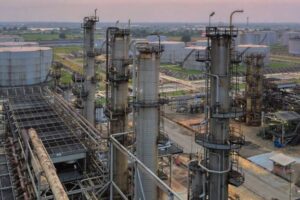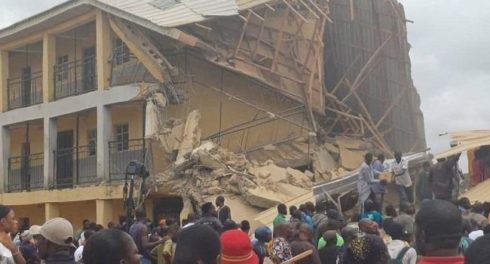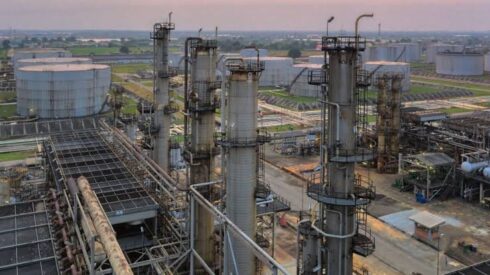The recent collapse of a two-storey building at Saint Academy in Plateau State, which claimed the lives of 22 people including students, has once again highlighted Nigeria’s ongoing struggle with building failures. While the immediate focus is on the tragedy and the rescue efforts, the underlying causes of these recurrent disasters demand urgent attention.
A Decade of Death Of In Nigeria
Building collapses have become a distressing norm in Nigeria, with a staggering 271 buildings having crumbled in the past decade alone, resulting in over 500 deaths, according to the PUNCH Newspaper. This translates to an average of 27 building collapses annually. The PREMIUM TIMES further reported in May that the country recorded 41 building collapses in just 17 months. These numbers are not mere statistics; they represent real people and families who have been affected, communities that have been damaged, and a nation’s infrastructure that is at risk.
Oluwaseyi Oduye, a fire and safety expert, highlighted one of the primary issues: “The application of building codes is there, which Nigeria has not been using, and this is supposed to serve as a guide to builders on building construction. If you are supposed to use 10 bags of cement and you are using four or five, automatically there will be a shortfall, and that will lead to building collapse.”
Synagogue Church Building Collapse in 2014
On September 12, 2014, one of Nigeria’s deadliest building collapses occurred when a six-storey building belonging to the Synagogue Church of All Nations in Lagos collapsed, resulting in the deaths of at least 116 people. Initially, around 300 individuals were trapped under the rubble, but rescue teams managed to save some victims who were then transported to nearby hospitals. This tragic event underscored the severe consequences of construction failures and the urgent need for stringent building regulations.
The aftermath of the Synagogue Church collapse saw numerous investigations and debates about the causes, including structural defects and potential regulatory oversights. Despite these discussions, similar incidents have continued to occur, pointing to a systemic issue within the building and construction industry in Nigeria.
Lekki Building Collapse in 2016
Two years after the Synagogue Church tragedy, on March 8, 2016, a five-storey building under construction at Lekki Gardens Horizon 1 in Lagos collapsed, resulting in the deaths of 34 people, most of whom were construction workers. This incident once again highlighted the dire state of building practices in Nigeria, with allegations of substandard materials and poor workmanship being common themes in the subsequent investigations.
The Lekki collapse prompted calls for more rigorous enforcement of building codes and regulations, as well as better oversight by relevant authorities. However, the frequency of such disasters suggests that much more needs to be done to prevent future tragedies and ensure the safety of buildings across the country.
Titanic Building Collapse in 2006
The Titanic building in the Ebute Metta area of Lagos, which collapsed on July 18, 2006, claimed no fewer than 28 lives. The four-storey building, which had been erected just three years prior, became a symbol of the dangers posed by inadequate construction standards. Over 50 people were rescued, many with injuries, highlighting the scale of the disaster and the urgent need for reform in building practices.
Reports indicated that the Titanic building collapse was due to a combination of structural failures and the use of substandard materials. This incident, along with others, has fueled public outcry for accountability and stricter regulations to ensure that buildings are constructed to withstand the test of time and avoid such catastrophic failures.
Jos School Building Collapse in 2014
In September 2014, tragedy struck Jos South Local Government Area when the Abu Naima Primary and Secondary School in Bukuru collapsed, resulting in the deaths of 10 pupils. This incident not only devastated the local community but also raised serious concerns about the safety of educational institutions across the country. The collapse of a school building, in particular, underscores the critical need for ensuring that all public buildings, especially those housing vulnerable populations like children, are built to the highest standards of safety.
The Jos school building collapse prompted a national conversation about the importance of maintaining and enforcing building standards in educational facilities. It also highlighted the need for regular inspections and maintenance to prevent such tragedies from occurring in the future.
Umuahia Building Collapse in 2013
The Agbama area of Umuahia, Abia State, was thrown into mourning in May 2013 when a building under construction collapsed, resulting in the deaths of at least seven people. The incident occurred at night, and it took the frantic efforts of various rescue teams to prevent the death toll from rising further. This collapse, like many others, was attributed to poor construction practices and the use of substandard materials.
The Umuahia building collapse added to the growing list of tragic incidents that have plagued Nigeria’s construction industry. It highlighted the urgent need for comprehensive reforms and stricter enforcement of building regulations to ensure the safety and durability of structures across the country.
Experts Highlight Regulatory Failures in Building Collapses
Experts in the construction industry assert that the responsibility for building collapses in Nigeria extends beyond builders using substandard materials. They claim that certain government agents are also complicit. According to these experts, the adherence to building codes is often neglected, leading to dangerous construction practices. They argue that if regulatory bodies enforced compliance with existing building codes, the incidence of building collapses would significantly decrease.
These professionals emphasize the urgent need for both Federal and State governments to ensure that their construction regulatory agencies fulfill their mandates effectively. They point to numerous buildings marked for demolition years ago that remain in use, attributing this to corruption within the regulatory system. The call for action is clear: a collaborative effort between the government, the construction industry, and civil society is essential to ensure a safer built environment.
Collaborative Efforts Needed to Prevent Future Tragedies
Experts underline that prioritizing building safety and holding accountable those who flout regulations is crucial to preventing future tragedies. They believe that Nigeria can safeguard its citizens by implementing stricter oversight and ensuring that those responsible for maintaining building standards are not compromised. This approach, they assure, will lead to a dramatic reduction in the frequency of building collapses.
The construction specialists urge a multi-faceted strategy that involves rigorous enforcement of building codes, increased transparency in the regulatory process, and active involvement of civil society in monitoring construction activities. By fostering a culture of accountability and safety, Nigeria can not only protect lives but also build public confidence in the structural integrity of its infrastructure.
Table of Contents
Discover more from OGM News NG
Subscribe to get the latest posts sent to your email.













